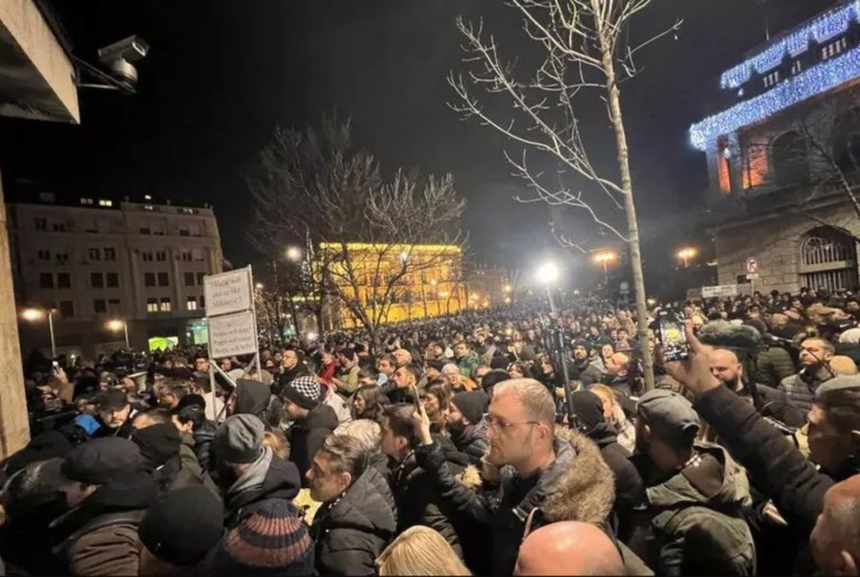International audio research non-governmental organization “Earshot” has released a report concluding that demonstrators at a mass protest in central Belgrade on March 15 were “very likely” exposed to a “targeted attack using a directed acoustic weapon.”
This finding contradicts claims from the Russian Federal Security Service (FSB) report and Serbian authorities, which suggested the commotion was caused by the use of pyrotechnics or implied that the crowd’s reaction was merely a response to the sound produced by the crowd itself, according to Earshot’s report published on June 17.
Earshot’s Investigation and Findings
Following the alleged acoustic attack on participants of the March 15 protest, who were paying respects to victims of an accident in Novi Sad, Earshot conducted a comprehensive analysis. This included audio analysis from 19 video recordings, 15 detailed interviews with witnesses, and processing over 3,000 written statements from those present.
The report states that all witnesses could clearly recall the unknown sound of the attack, describe it, and distinguish it from other environmental sounds (such as engines, fireworks, whistles, drones, and running). “The significant consistency in numerous testimonies collected and analyzed by Earshot leads with high probability to the conclusion that the gathered individuals were exposed to an attack of extremely directed acoustic force,” the report asserts.
Focus on LRAD Technology and Contradictory Claims
The report concludes with an investigation into the possibility that a Long Range Acoustic Device (LRAD) was used, with a particular focus on the Model 450XL, which Serbian police have confirmed they possess.
“While the FSB in its report claims that ‘mass movement is not possible with the short-term use of a special device,’ Earshot’s findings clearly show the opposite when compared to the technical capabilities of the LRAD 450XL from its user manual,” the report states.
After accusations that an unauthorized sound weapon was used against peaceful demonstrators at the March 15 protest, Serbian authorities requested Russian investigators to conduct an “independent investigation.” Serbian President Aleksandar Vučić announced on April 16 that the FSB concluded that a “sound cannon” was not used.
Currently, there is no official information on what caused the fear and panic among the demonstrators. Authorities have denied accusations that security services, such as the army and police, used a “sound cannon.” Over a few days, authorities went from denying the police possessed a “sound cannon” to threatening prosecution for those spreading “such deceptions” and “disturbing the public,” ultimately admitting that the police do have sonic devices, but claiming they have “never used them.”
Students leading mass protests in Serbia, as well as dozens of non-governmental organizations, have requested an investigation from judicial bodies. In addition to the Russian FSB, authorities also invited the American Federal Bureau of Investigation (FBI) to conduct an independent investigation. However, there is no information on how the FBI responded to the Serbian authorities.
At the request of several Serbian NGOs, the European Court of Human Rights is also conducting an investigation into the incident at the protest.
A “sound cannon” falls into the category of non-lethal weapons that can be used for police and military purposes – for riot control, repelling attacks, or long-distance communication.







